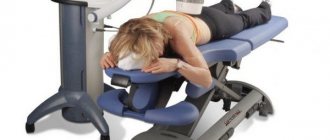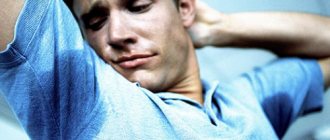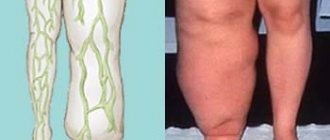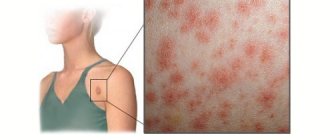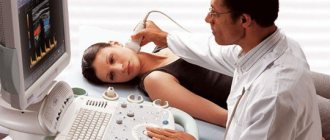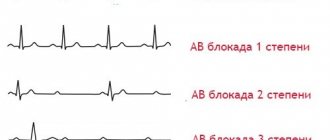Published 05/17/2020 · Comments: · Reading time: 7 min · Views: Post Views: 1,299
Proctitis is an inflammatory process that develops in the mucous membrane of the walls of the rectum. The disease is quite common, occurring in 30% of all patients with diseases of the digestive system and gastrointestinal tract.
Women of the middle age group are susceptible to developing the disease. In men, this disease occurs in middle, older and older ages. Sometimes the disease occurs in children, mainly in breastfed infants, as well as in cases of advanced helminthiasis in children of different ages.
Proctitis and its symptoms seriously worsen the patient’s quality of life and negatively affect his psycho-emotional state. Lack of treatment leads to chronicity of the inflammatory process and provokes complications.
Many causes of illness
There are many reasons for the development of pathology. The main ones are the following:
- Inflammatory processes or infections.
- Sexually transmitted diseases - syphilis and gonorrhea are among the most important factors in the occurrence of proctitis.
- Tuberculosis of any stage of complexity.
- Presence of parasites in the intestines.
- Cracks that appear as a result of regular anal sex or if a person has chronic hemorrhoids.
The development of the disease causes the presence of many diseases. These include such serious ones as hepatitis, cirrhosis, cholecystitis, pancreatitis, gastritis and ulcers. Diseases of the cardiovascular system are no less destructive to the human body. Tumors in the rectum also cause inflammation. Impaired immunity, prolonged exposure to radiation and aggressive exposure to toxins are considered no less serious factors in the development of proctitis.
Associated causes of the disease include regular hypothermia, bacterial infections, a sharp decrease in immunity, inflammation in the pelvic organs, and irregular bowel movements.
Treatment of proctitis
The acute form of the disease is quite treatable. The majority of cases can be treated conservatively. But, if the disease has become chronic, it will not be possible to recover. That’s why it’s so important not to let the disease get worse.
Basically, treatment for proctitis consists of:
- Following a diet helps speed up the healing process significantly. Everything spicy, fried, and fatty should be excluded from the patient’s menu. The menu should include fermented milk products, liquid and ground foods. In the acute phase of the disease, exclude sweets and fiber.
- Drug therapy. Treatment of proctitis is carried out after the cause of the disease is determined. If the inflammation is of bacterial origin, then it is treated with a course of antibiotics. Antispasmodics and antihistamines are used together with them. If the inflammation is caused by ulcerative colitis, hormonal drugs are added to treatment.
- Herbal medicine. To treat this disease, cleansing enemas and microenemas with herbs are indicated. There are many folk recipes for herbal remedies to effectively combat inflammation. Herbal infusions are used not only for local baths, but also for teas. They are prescribed to be taken to normalize stool during constipation.
- Adequate physical activity. Patients should not sit for a long time to avoid the development of blood stagnation in the pelvic organs and weakening of the pelvic floor muscles. Patients are shown a set of physical exercises to improve blood circulation and strengthen muscles. Bed rest is not a contraindication for exercise.
Features of symptoms and diagnosis
People confuse the concepts of proctitis and paraproctitis. Despite the almost identical names, paraproctitis is an inflammation of the pararectal tissue located directly near the rectum, and proctitis is an inflammation of the mucous membrane of the intestine itself. Important signs of proctitis are pain in the lower intestine and difficulty defecating. Depending on the type of disease, symptoms and treatment may vary.
- Chronic proctitis can develop over a long period of time, gradually entering phases of exacerbation or attenuation of the disease. When exacerbated, chronic proctitis is characterized by pain in the rectum or abdomen on the left side. When the disease subsides, the person does not feel any discomfort. However, mucous discharge is present along with feces.
- Gonorrheal proctitis is characterized by rectal spasm and regular constipation. Instrumental diagnosis of chronic proctitis is complicated by the fact that the anal sphincter is narrowed due to spasm and severe swelling of the intestine. A doctor can diagnose the disease using a finger lubricated with Vaseline. At the same time, traces of mucus mixed with blood remain on the doctor’s glove.
- Acute proctitis is manifested by sharp pain in the rectum, bloody or purulent discharge with feces. The pain becomes much stronger during bowel movements. A person also feels them in the organs of the reproductive system, they respond in the lower back, constipation is replaced by indigestion. Defecation is accompanied by bloody discharge. Acute proctitis is a rapid process that develops in just a few days, and often hours.
- Ulcerative proctitis is one of the types of acute proctitis. It occurs as a result of regular trauma to the rectum, the activity of parasitic organisms and other influences accompanied by deep intestinal injuries. Due to some differences in symptoms and course of the disease, this type is considered by doctors separately from other types. The disease can develop after surgical interventions in the anus - removal of hemorrhoids, treatment of anal fissures, etc. The second name for this type of disease is focal proctitis. When lesions (ulcers) heal, scars appear. As a result of extensive scarring, intestinal stenosis develops.
Chronic proctitis
Herpes proctitis
- Chlamydial proctitis develops due to chlamydia. The initial form is urethritis. This proctitis occurs in children, men and women, regardless of age. You can become infected with chlamydia either through domestic or sexual contact. The damage to the urethra extends to the rectum, entering it through the anus. The first symptoms of this type of disease are burning and itching in the anus.
- Superficial proctitis is an inflammation that affects only the epithelium of the rectum. Medicines are prescribed for local action while following a strict diet, which allows treatment at home. Follicular proctitis is accompanied by nodular thickening of the rectal mucosa and bleeding. Very often, this form of symptoms resembles ulcerative colitis.
- Atrophic proctitis is thinning of the mucous membranes of the rectum. The cause may be radiation exposure due to cancerous diseases of the organ. Purulent proctitis develops into a chronic form and is one of the types of infectious. When viruses are detected - chlamydia, gonococci, herpes - the patient is given this diagnosis. The disease is characterized by the appearance of purulent plaque on the rectal mucosa.
- Gonorrheal proctitis is a viral disease that is considered a secondary infection. It is formed against the background of gonorrhea when pus from the genitals enters the anus. The disease often occurs in homosexuals. Manifestations of gonococcal proctitis are itching and burning in the anus, pus and mucus during bowel movements.
- Herpetic proctitis is characterized by the formation of vesicles - bubbles on the mucous membrane, which very quickly transform into extensive focal lesions - erosions and ulcers. The second sign of this disease is profuse purulent and bloody discharge from the rectum. The clinical picture of the lesion in adults is very complex. Patients often experience increased body temperature, increased weakness, migraines, difficulty urinating, and profuse purulent discharge during bowel movements.
- Hemorrhagic proctitis is a consequence of chronic hemorrhoids. It is characterized by hyperemic pinpoint hemorrhages along the surface of the entire rectum. Patients experience weakness, redness of the anus, chills, pallor, fatigue and anemia. Any touch to the affected area produces unbearable sharp pain. The second name of the disease is catarrhal proctitis.
The main methods of study and diagnosis are:
- Rectoscopy.
- Biopsy of the rectal mucosa.
- Taking a smear (scraping) from the intestinal wall.
- Palpation.
In addition, the patient must undergo blood, urine, and stool tests.
Complications after proctitis
If left untreated or improperly treated, proctitis causes a number of complications:
- Acute paraproctitis - the tissues adjacent to the rectum become inflamed.
- Pelvioperitonitis is an inflammation of the tissues of the peritoneum of the pelvis.
- Repeated acute proctitis becomes chronic. A protracted purulent process leads to the appearance of fistulas.
- Colitis and sigmoiditis. Inflammation spreads higher up the intestine, affecting the sigmoid colon and large intestine.
- Polyps and tissue degeneration into malignant formations are possible.
- Reduction of the lumen of the rectum.
Therapy of the disease and its varieties
Proctitis must be treated under the strict supervision of a doctor. Treatment of chronic proctitis - therapy with antibiotics or antibacterial agents:
- Penicillins.
- Cephalosporins.
- Macrolides.
- Aminoglycosides.
- Tetracyclines.
- Levomycetin.
- Metronidazole.
Antibiotics - tablets, suspensions, capsules - are suitable only if the cause of the disease is bacteria. However, if the disease is the result of uncontrolled use of these drugs or their overdose, then drug treatment of proctitis with antibiotics will not only not help, but will also worsen the situation. In this case, the doctor may prescribe Vancomycin or Trichopolum. For herpes and cytomegalovirus infections, antiviral and antiallergic drugs are used - Nalkrom, Bicromat, Vividrin, Intal. Sulfasalazine is prescribed for oral administration. Treatment of the chronic version of the disease can be done on an outpatient basis; the ulcerative type of the disease requires immediate hospitalization. No-Shpa is very often used as an antispasmodic that relieves major pain sensations.
If the disease requires local treatment (extensive ulcers, nodes and rashes in the rectum), suppositories and enemas are used. For the post-radiation type of the disease, Hydrocortisone or Mesalazine is used. These drugs are administered through the anus. Cortisol is produced in the form of foam, specially designed for insertion into the anus. A special device is provided for this. Local antimicrobial drugs include Colibacterin. The same applies to ordinary potassium permanganate, which is diluted in a certain proportion with water and injected directly into the rectum using an enema. If the disease manifests itself during pregnancy or a child suffers from it, then treatment with microenemas and glycerin suppositories is used.
Relief rectal suppositories are very effective for proctitis. They are used to eliminate swelling, itching and burning, and severe inflammation. Relief reduces blood loss, and in case of regularly occurring hemorrhoids, it helps to straighten the node without surgery. Relief is used in the morning and evening, as well as after each act of defecation during a particularly acute period of the disease.
As an additional therapy, many doctors prescribe spa procedures - subaqueous baths, mud, intestinal douching with alkaline mineral waters, therapeutic massage and physical exercise. For severe cicatricial narrowing of the anus, surgical intervention is used. If you follow all the doctor’s recommendations and the treatment regimen, the prognosis for the outcome of the disease is favorable. Only a competent doctor can cure proctitis without health consequences.
Diagnostics
The principle of a doctor’s diagnostic actions boils down to the following:
- First of all, the presence of characteristic complaints from the patient regarding stool disorders and the release of pathological mucus along with feces give the doctor reason to suspect a disease of the rectum, namely chronic proctitis.
- An objective examination includes examination of the anal area and the tissues surrounding it, palpation of all parts of the abdomen with the determination of local pain or discomfort.
- It is mandatory for a doctor to conduct a rectal digital examination, with the help of which the condition of the mucous wall, the presence of deformations or defects, and ulcerative lesions are assessed. The specialist can also judge the nature of the stool, the presence of impurities in it, etc.
- The coprogram gives a complete picture of the contents of feces and the presence or absence of an inflammatory component, parasites and helminths.
- Culture of stool on nutrient media helps the doctor diagnose the exact type of microorganism and helps determine its sensitivity to antibiotics.
- Endoscopic examination allows direct visualization of the affected rectum using a proctoscope inserted into its lumen. The method is also necessary for taking biopsy material and removing polyps, if necessary.
Attracting public funds
It must be remembered that folk remedies in the treatment of lesions of any kind are exclusively an auxiliary addition to the main treatment. Treatment of proctitis at home can be carried out using traditional methods:
- Boric acid (3%) is mixed with a tablespoon of calendula infusion and the patient is given enemas daily for proctitis.
- A decoction of calendula inflorescences is taken 1/4 cup in the morning, lunch and evening. Calendula (2 tbsp) is poured with boiling water (0.5 l), heated for 20 minutes over steam. Microenemas are given with the same composition, diluting 1 tsp. products in 1⁄4 part glass of water.
- For baths you need to steam 1/2 cup of horsetail with 1 liter of boiling water, wrap the container in a towel and after 20 minutes. pour the mixture into the bath.
- Sea buckthorn oil is often used for microenemas. 1 hour before bedtime, 50 ml of this substance or any other vegetable oil is injected into the rectum (on the advice of a doctor).
Sitz baths with potassium permanganate are very helpful. To do this, 2-3 crystals of the substance need to be thrown into the bathroom and wait until they are completely dissolved.
Pathogenesis
The basis of pathogenesis is the presence of the intestinal wall in a state of irritation for one reason or another (described above), which leads to constant inflammation and further tissue damage. The dysbacteriosis existing in the lumen aggravates the situation and contributes to the severity of the process.
Chronic proctitis in its development goes through the following morphological changes:
- normotrophic form of the process - diagnosed in cases where the structure of the mucous membrane retains its natural architectonics and has an unchanged appearance during endoscopic examination;
- the hypertrophic form of the process occurs with thickening and excessive growth of the folds of the rectum, which is very well visualized endoscopically;
- the atrophic form of the process is characterized by irreversible pathological atrophy of all folds with disruption of their functions.
Allowed and prohibited during the diet
Proper dietary nutrition for proctitis is a paramount component of the entire recovery process. It makes recovery extremely easy.
With proctitis, accompanied by frequent constipation, intestinal motility is greatly weakened. In this case, foods containing fiber are included in the menu. They stimulate the gastrointestinal tract and the movement of fecal matter. In addition, the diet for proctitis should contain a maximum of vitamins and microelements. The main components in the patient's diet should be as follows:
- Coarsely ground black bread or with a high bran content.
- Fruits - dried fruits, oranges, tangerines, berries, apples.
- Vegetables - cabbage, including sauerkraut, beets in raw and boiled forms, pumpkin - puree, soups, as well as turnips, watercress.
With your doctor's permission, you can supplement your diet with fruit drinks and herbs. It is recommended in the morning (on an empty stomach) to drink 200 ml of tap water with a drop of lemon and 2 tsp. Sahara.
Foods that increase the secretion of the digestive organs are prohibited. These include:
- White bread, bakery products and baked goods made from premium flour.
- Strong tea and coffee.
- Spices and hot seasonings.
- Smoked and dried dishes.
- Chocolate and chocolate-containing products.
- Cereal porridges - rice, semolina, buckwheat.
- Garlic, radish and pepper.
- Fatty meats and broths made from it, fried meat and fish.
Especially if you have proctitis, you should not eat canned or pickled products, sausages and sausages.
Prevention of proctitis is a set of simple norms and standards of human life, which are very easy to observe. For example, a healthy lifestyle - normal physical activity, giving up tobacco and alcohol, proper diet and daily routine. A prerequisite is an orderly sex life and strict adherence to the rules of personal hygiene. In case of doubtful sexual intercourse, a condom must be used. If an adult or child exhibits 2 or more symptoms of proctitis, you should immediately consult a doctor. During prevention and treatment, it is very important to give moderate physical activity to the body. Prolonged sitting in a sitting position negatively affects the pelvic muscles, thereby disrupting the normal process of bowel movements.
If the patient consults a doctor in a timely manner, serious consequences can be avoided. If the disease has already acquired a chronic form, a complete cure is impossible, only the elimination of painful symptoms. The patient should not treat himself or use medications without the advice of a doctor. Only the attending physician can accurately diagnose and determine which treatment methods will be most effective in this case.

